Bright and Airy Home in Moulin Rouge(Appartement chaleureux près du Moulin Rouge et Sacré Coeur)
1 ليلة
الغرف والنزلاء
1 غرفة, 2 بالغين, 0 طفل
جميع أماكن الإقامة في باريس
Bright and Airy Home in Moulin Rouge
Appartement chaleureux près du Moulin Rouge et Sacré Coeur
9 Rue Fromentin, الدائرة التاسعة في باريس, 75009 باريس, إيل دي فرانس, فرنسا
نحن نطابق السعر
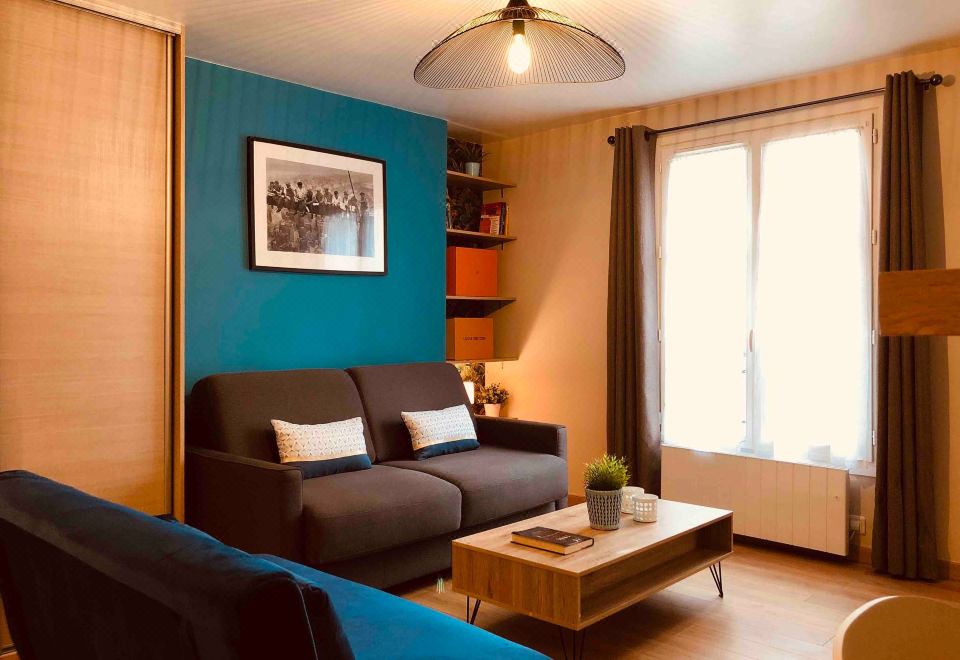

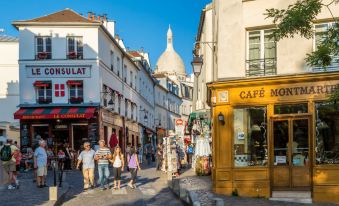
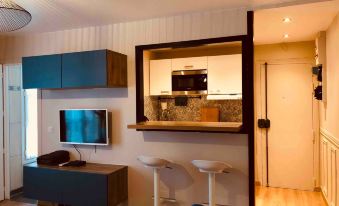

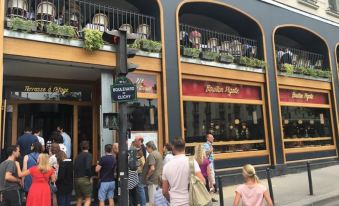
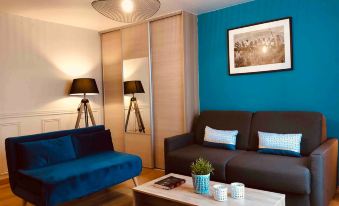
المرافق
خدمة حافلة ترددية
ممنوع التدخين في الأماكن العامة
جميع المرافق
وصف مكان الإقامة
Rental basis: Entire house or apartment
Number of bedrooms: 1; Number of other rooms with beds: 0
The history of Pigalle, as a red light district, begins in 1881 with the opening, in a room previously occupied by a post office, of the cabaret Le Chat noir de Salis located at 84, boulevard Rochechouart in which Aristide Bruant works. A cantor of interloped Paris, around him settled Bohemia. Bruant took over the cabaret in 1885, moved to rue Victor Massé and renamed it Le Mirliton. In October 1885, Maxime Lisbonne, returning from New Caledonia where he was serving a life sentence, pardoned in 1880, opened La Marmite, he presented daring shows and invented striptease at the Japanese Divan.
In 1889, another cabaret, Le Moulin-rouge, settled at the bottom of the Montmartre hill and quickly it was followed by numerous restaurants and bars. Little by little, it attracts customers from the usual nightlife districts around Porte Saint-martin and Porte Saint-denis, pimps follow them and attend the Élysée-montmartre night ball, at 80, boulevard Rochechouart. The district is immortalized by artists such as Henri de Toulouse-lautrec, Pablo Picasso, Vincent van Gogh, Maurice Neumont, Salvador Dalí.
Around 1910, the “middle of the crime” definitively set its sights on the districts of Pigalle and Montmartre. Place Pigalle, cafes, La Nouvelle Athènes, La Kermesse, Le Petit Maxim's, L'omnibus, welcome mobsters and pimps every night. At La Kermesse reigns the Coco Gâteau team. The pimps are looking for girls, to make prostitutes who will be sent to brothels to Argentina and the United States. Game tables are installed everywhere, professional players use make-up cards. The famous Tribout began his career at L'omnibus; after the war he held Le Frolic's.
In 1918, with restrictions on alcohol and light, only brothels remained open after 9 p.m., but they were now in the hands of real "middle men". Customers find a profusion of prostitutes and booze. In the 1930s, Pigalle became the epicenter of the underworld, mobsters set up
عرض المزيد
التقييمات
كن أول من ينشر تقييمًا بعد إقامتك
المناطق المحيطة
المترو: Blanche
(140م)
المترو: Pigalle
(260م)
عرض على الخريطة
نظرة عامة
غرف
الخدمات والمرافق
السياسات

6
شقة، منزل كامل أو شقة
1 سرير مفرد و 1 سرير أريكة
واي فاي (رسوم إضافية)
لغير المدخنين
تلفزيون
آلة صنع القهوة
فرن
محمصة الخبز
التحقق من التوافر
الخدمات والمرافق
المزيد من المرافق
المواصلات
خدمة حافلة ترددية
الأماكن العامة
ممنوع التدخين في الأماكن العامة
سياسات مكان الإقامة
أوقات تسجيل الوصول وتسجيل المغادرة
تسجيل الوصول: بعد الساعة 15:00
تسجيل المغادرة: قبل الساعة 11:00
وصف مكان الإقامة
- عدد الغرف:1
Rental basis: Entire house or apartment
Number of bedrooms: 1; Number of other rooms with beds: 0
The history of Pigalle, as a red light district, begins in 1881 with the opening, in a room previously occupied by a post office, of the cabaret Le Chat noir de Salis located at 84, boulevard Rochechouart in which Aristide Bruant works. A cantor of interloped Paris, around him settled Bohemia. Bruant took over the cabaret in 1885, moved to rue Victor Massé and renamed it Le Mirliton. In October 1885, Maxime Lisbonne, returning from New Caledonia where he was serving a life sentence, pardoned in 1880, opened La Marmite, he presented daring shows and invented striptease at the Japanese Divan.
In 1889, another cabaret, Le Moulin-rouge, settled at the bottom of the Montmartre hill and quickly it was followed by numerous restaurants and bars. Little by little, it attracts customers from the usual nightlife districts around Porte Saint-martin and Porte Saint-denis, pimps follow them and attend the Élysée-montmartre night ball, at 80, boulevard Rochechouart. The district is immortalized by artists such as Henri de Toulouse-lautrec, Pablo Picasso, Vincent van Gogh, Maurice Neumont, Salvador Dalí.
Around 1910, the “middle of the crime” definitively set its sights on the districts of Pigalle and Montmartre. Place Pigalle, cafes, La Nouvelle Athènes, La Kermesse, Le Petit Maxim's, L'omnibus, welcome mobsters and pimps every night. At La Kermesse reigns the Coco Gâteau team. The pimps are looking for girls, to make prostitutes who will be sent to brothels to Argentina and the United States. Game tables are installed everywhere, professional players use make-up cards. The famous Tribout began his career at L'omnibus; after the war he held Le Frolic's.
In 1918, with restrictions on alcohol and light, only brothels remained open after 9 p.m., but they were now in the hands of real "middle men". Customers find a profusion of prostitutes and booze. In the 1930s, Pigalle became the epicenter of the underworld, mobsters set up